Abstract
With launching of Sputnik by the Soviet Union in the late 1950s, science and technology became a high priority in the United States. During the two decades since, health sciences libraries have experienced changes in almost all aspects of their operations. Additionally, recent developments in medical care and in medical education have had major influences on the mission of health science libraries. In the unending struggle to keep up with new technologies and services, libraries have had to support increasing demands while they receive a decreasing share of the health care dollar. This paper explores the economic challenges faced by academic health sciences libraries and suggests measures for augmenting traditional sources of funding. The development of marketing efforts, institutional memberships, and fee-based services by the Louis Calder Memorial Library, University of Miami School of Medicine, is presented as a case study.
Full text
PDF
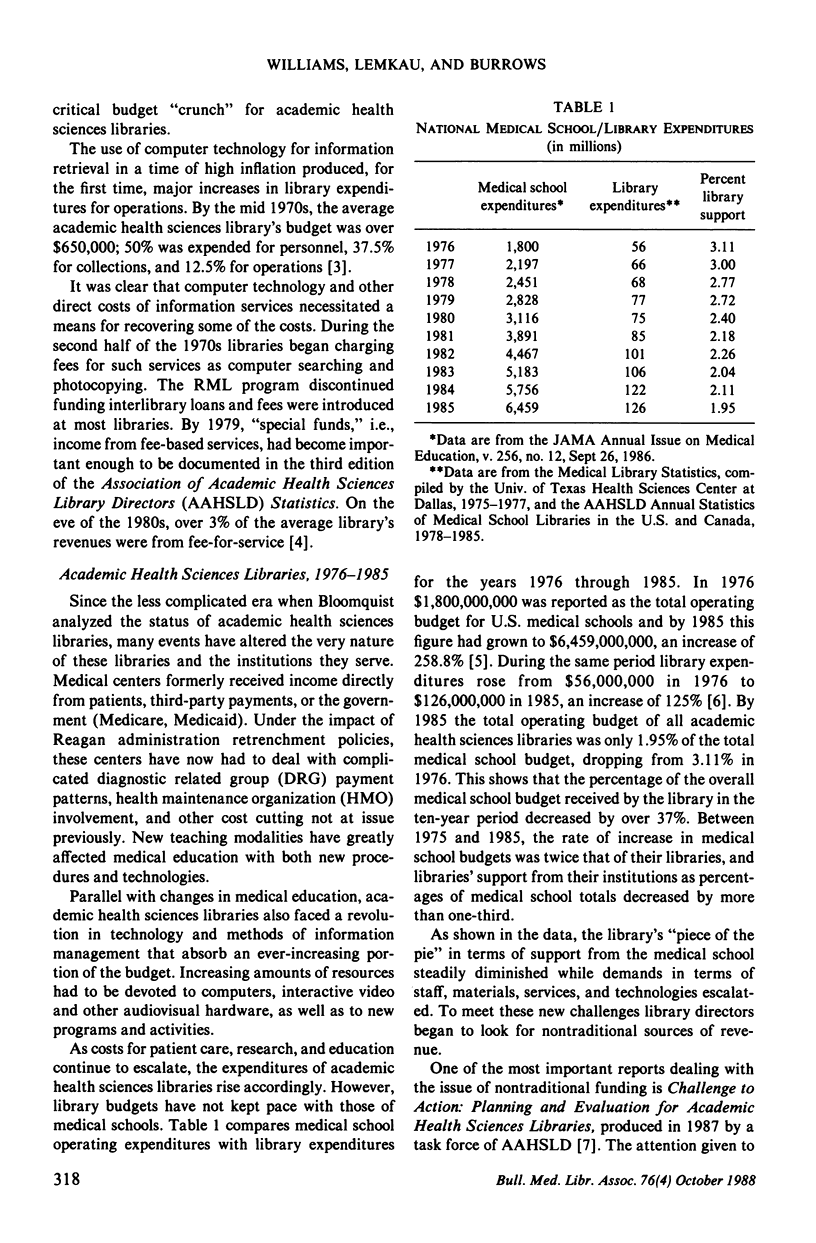
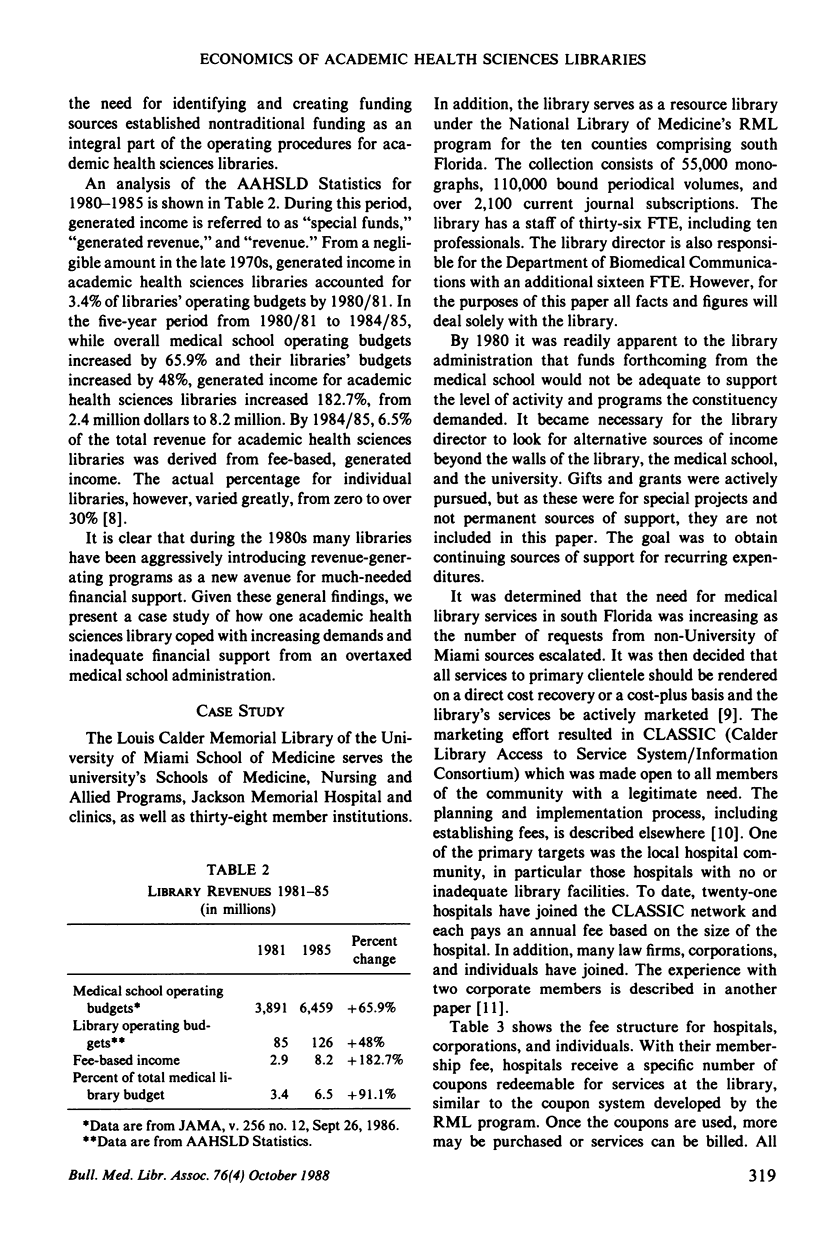
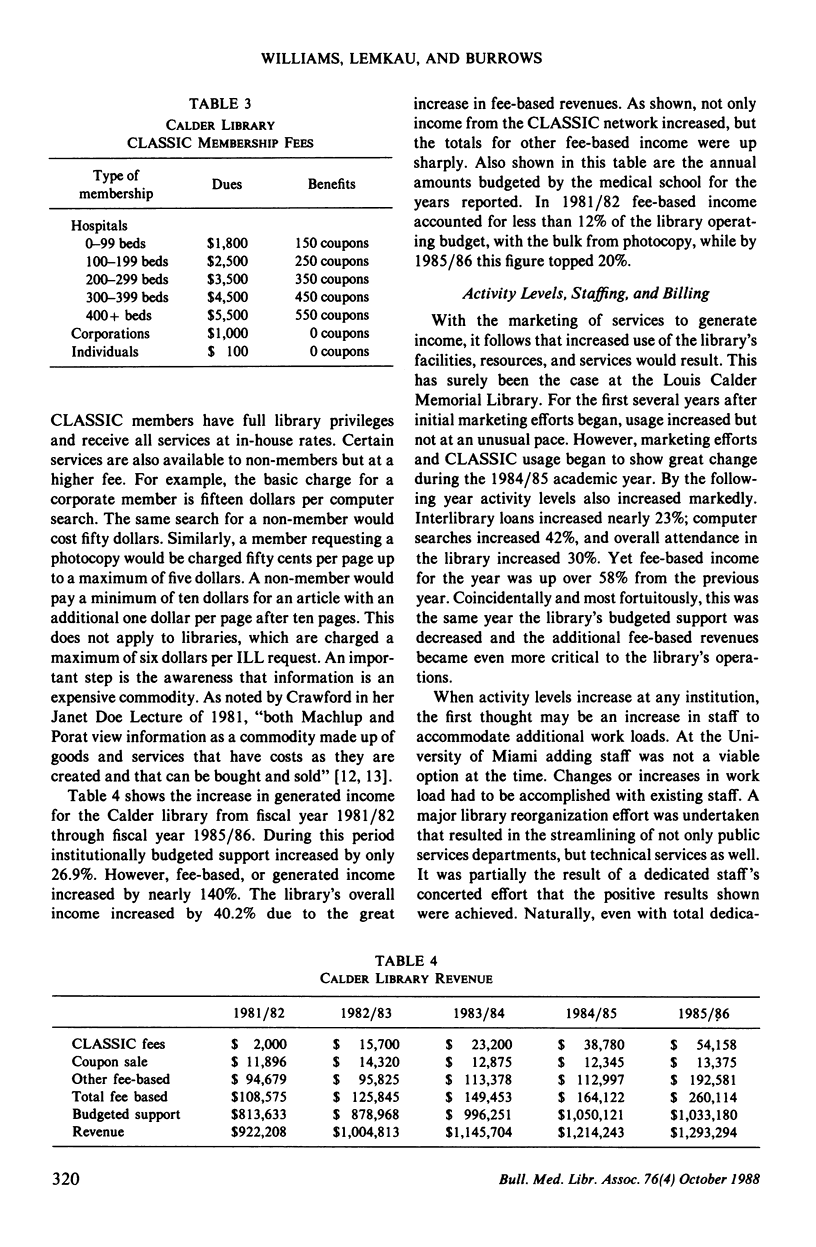
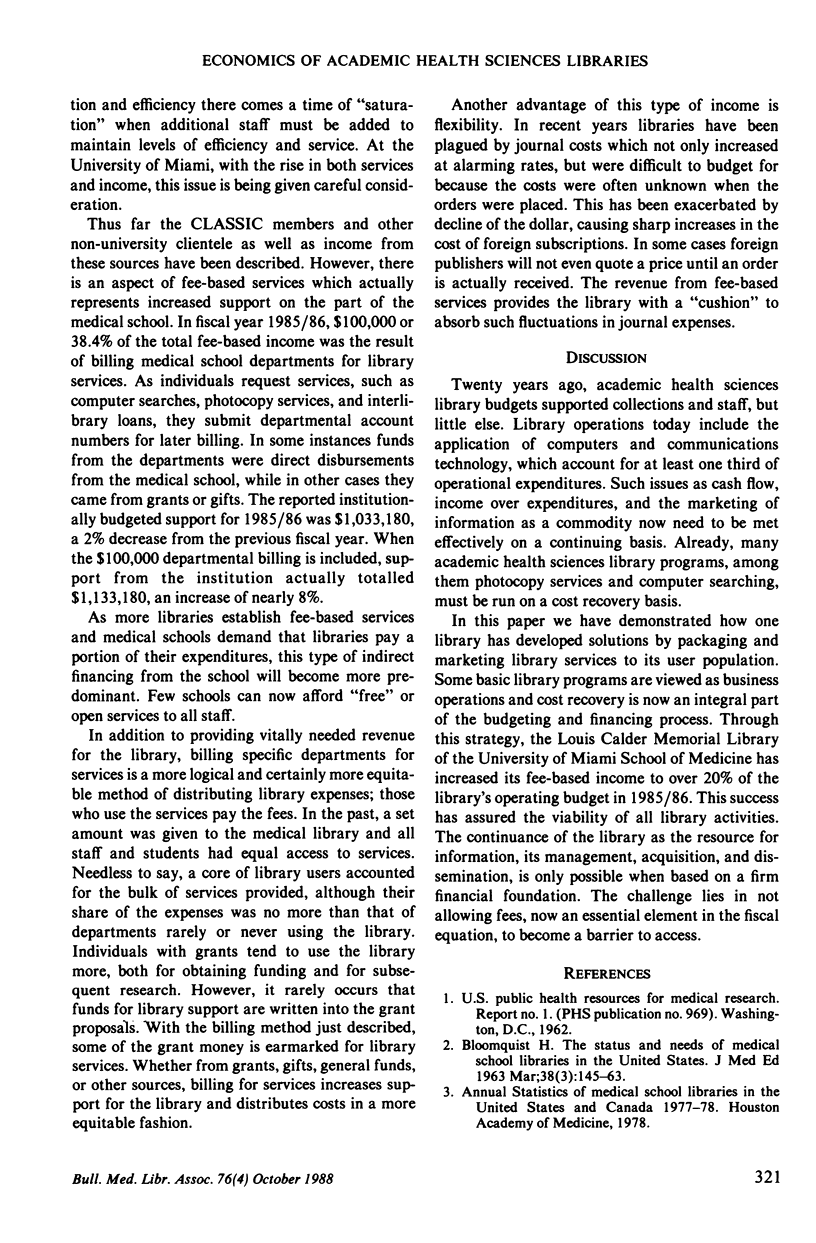
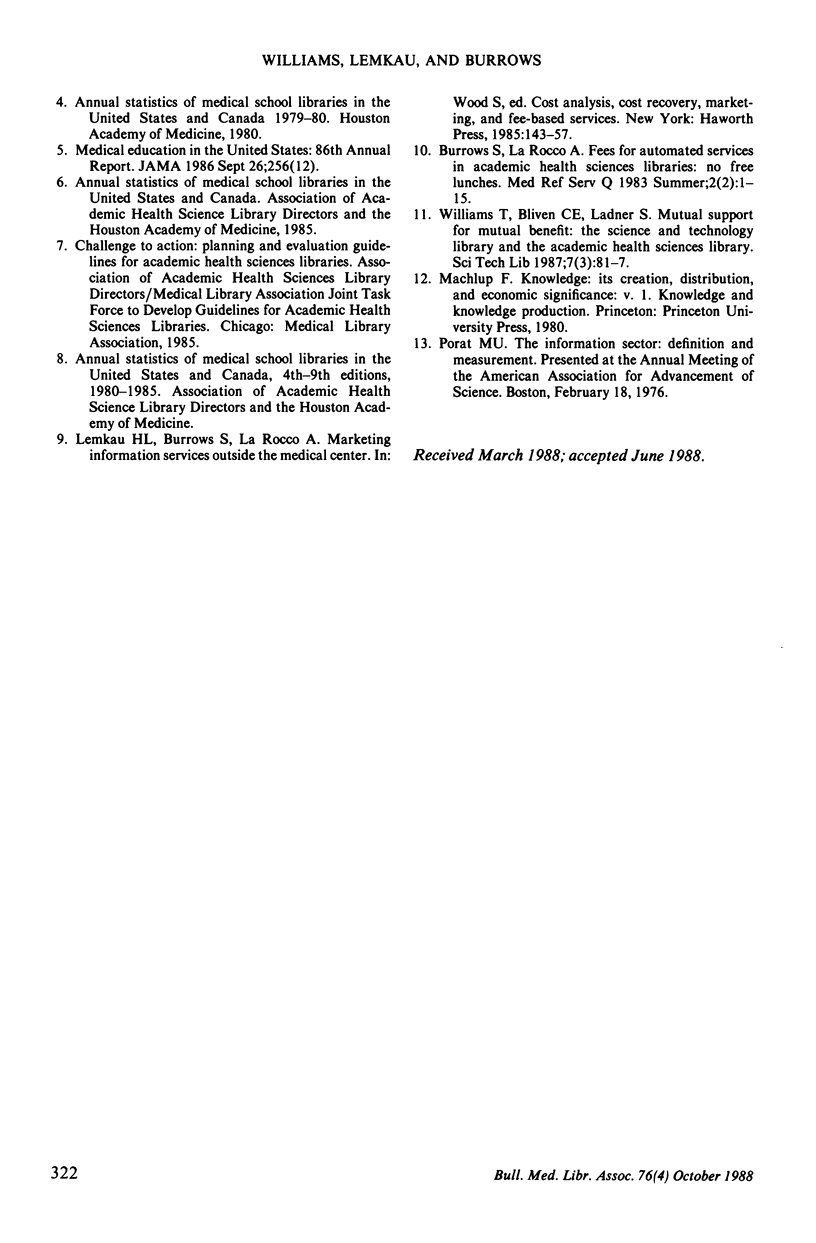
Selected References
These references are in PubMed. This may not be the complete list of references from this article.
- BLOOMQUIST H. The status and needs of medical school libraries in the United States. J Med Educ. 1963 Mar;38:145–163. [PubMed] [Google Scholar]
- McKinn E. J., Johnson E. D. Techniques of Online Citation Verification in NLM Databases. Med Ref Serv Q. 1983;2(3):1–23. doi: 10.1300/J115v02n03_01. [DOI] [PubMed] [Google Scholar]


